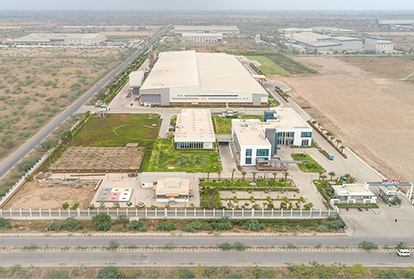
Importance of Long-Range Visioning and Master Planning of The Greenfield Industrial Projects
Years ago, when the master plan was being established, the vision for the growth of a city or town was determined. The planner not only assigns areas, but also plans in such a way that the city expands through time, the city features advance, traffic and congestion are handled, and so on. To achieve the motif, several projects are studied and analyzed, including current projects, projects that require renovations or restorations, projects that must be dismantled, and, most significantly, new upcoming projects.
As we all know, the most essential criterion for determining how developed a city is based on the resources it possesses, the advancement it accommodates as well as will accommodate, and the expansion in terms of infrastructure it envisions in the coming years. In other words, the master plan is a futuristic plan that mimics the evolution of the metropolis.
The initiatives taking place around the city, as well as those envisioned in the master plan, can be divided into two major categories: greenfield and brownfield projects. To put it simply, greenfield projects are new forthcoming projects, and brownfield projects are old projects with or without modifications or reconstructions.
Greenfield projects are new forthcoming projects on a designated plot of land where no other action such as restoration, remodeling, demolition, or any form of construction limitation has occurred or been commenced.
Greenfield developments include industries, power plants, and airports. This plainly indicates that these are all large-scale urban developments with substantial investments planned for a vast piece of land. The building of such projects is directly proportionate to the expansion and development of infrastructure. To achieve this, many investors would invest in such sites and begin to plan their future aspirations.
When an owner purchases a piece of land for the purpose of establishing an industry, they imagine future growth, how they want to develop in the next years, and so on. However, the route from envisioning to implementing is extremely difficult. To properly complete this assignment, an architect is essential.
For example, suppose the owner purchased a big land piece with the intention of creating the plant in two distinct phases of growth. Over time, the plant will expand, and the owner will invest in the phases but with a time interval in order to grow exponentially.
He purchased the site and laid out the areas based on the plant’s specifications. However, in this strategy, the focus was on phase 1, and phase 2 was overlooked, and the land was consumed haphazardly. This circumstance resulted not only in the waste of land, but also of time and money. As of now, the planning is complete, and there is no room for phase 2, which will be viewed and considered when it begins; for the time being, let us concentrate on phase 1. And this short-term thinking caused a slew of problems.
What if an expert consultant was hired to plan within the set budget and with the fulfilment of all requirements? The architects, like the owner, envision their future growth, but their vision of growth and development does not immediately correspond to the futuristic plan they have developed. The strategy that not only meets current needs but also provides optimal area for future expansion.
The benefits of futuristic plans designed with the architect’s long-term vision are that they not only fit within the budget but also generate the plan by creating buffer spaces that can be used as a connection between phases 1 and 2 or as a differentiation between the two phases. One of the important factors the consultant considers in the planning of the phases with the scope for both the phases to be interconnected as well as the separate standing out ones, which gives flexibility as many times the requirements change with the time as change is directly proportional to time, so one can plan everything in accordance with the requirements not the requirements not because of the restrictions.
The architects not only optimized the use of land, but also saved time and money. It has also benefited the owner by allowing him to grow and expand without being confined or inflexible.
In order to benefit the community, the specialist consultants aim to build and expand with sustainability in terms of planning, material selection, and so on. As a result, we can say that the expert’s long-term vision is clearly reflected in the master plan that has been developed to ensure that all of the factors such as expansion, growth, versatility, future development, technological advancement, and, most importantly, flexibility to achieve all of these are met.
These professionals not only provide the groundwork for such projects, but they also connect the many stages of growth. Long-term visions have several advantages and are more effective than short-term visions. As a result, long-term visions are critical for being sustainable and versatile. Finally, giving flexibility with an optimized money, time, and space are crucial deliverables from the experts’ long- term visioned master plan.







